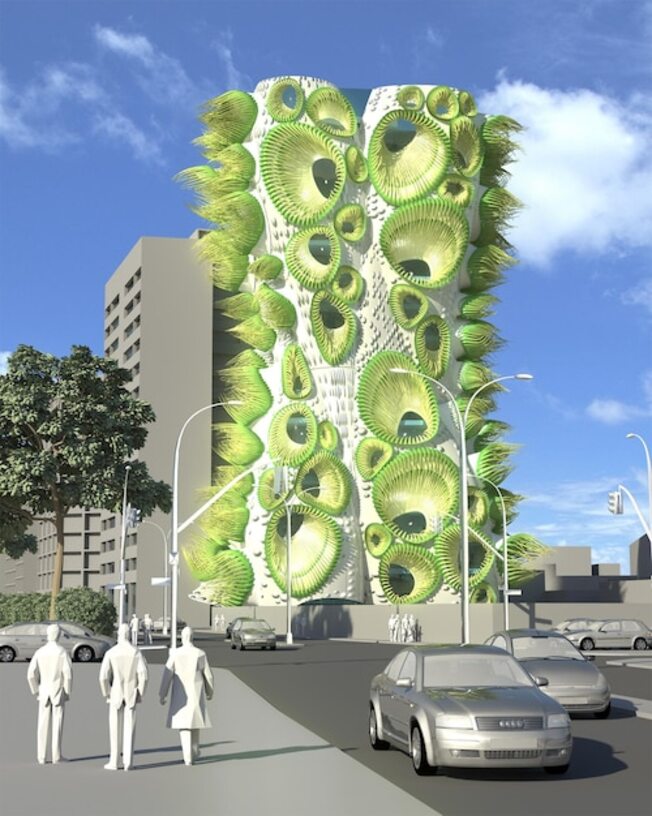Urban spaces: discovering the art of creative adaptation

In a constantly changing world, urban spaces become canvases for creativity and innovation. "Urban Spaces: Discovering the Art of Creative Adaptation" invites us to explore how we transform our cities and suburbs into vibrant and functional environments. From community gardens to colorful murals, every corner has the potential to tell a unique story. Join me on this journey where adaptability becomes the engine of sustainable development and social well-being, thus redefining our daily lifestyle.
1. The importance of green spaces in modern urbanization
The incorporation of green spaces in modern urban development is essential for improving the quality of life of citizens. These environments not only beautify cities but also provide a breath of fresh air amidst urban hustle and bustle. Parks and gardens act as the lungs of our metropolises, promoting biodiversity and even helping to mitigate the heat island effect. Additionally, these spaces facilitate social interaction, creating meeting points where communities can gather and share experiences, thereby strengthening the social fabric.
In a context where stress and daily routines can affect our mental and physical health, green spaces become essential refuges. Nature has a proven positive impact on emotional well-being; simply walking through a park or enjoying a green area can reduce anxiety levels and foster an overall sense of happiness. Thus, by integrating more green areas within urban design, not only are aesthetic and recreational needs addressed, but a healthier and more balanced lifestyle is also promoted for all city residents.
2. Innovative projects that transform forgotten areas
Innovative projects that transform forgotten areas are inspiring examples of how creativity can revitalize neglected urban spaces. In many cities, old factories, vacant lots, and deteriorated public spaces have been turned into centers of social and cultural activity. Initiatives like urban gardens not only produce fresh food for the community, but also promote social cohesion and environmental learning. These interventions demonstrate that, with a little imagination and collaboration, even the most neglected areas can be reborn as epicenters of life and dynamism.
Moreover, urban art plays a crucial role in this transformation. Vibrant murals and interactive sculptures not only beautify the urban landscape but also tell stories about local identity and promote a sense of belonging among residents. Collaborative projects with local artists allow communities to express their aspirations and challenges through art, thus creating a visual dialogue that connects past generations with future ones. This integrated approach not only enhances the aesthetics of the urban environment but also boosts tourism and strengthens the local economy by attracting visitors interested in exploring these reinvented spaces.
3. Murals and urban art: cultural expression in the streets
Murals and street art have emerged as powerful vehicles of cultural expression in the streets, transforming public spaces into open-air galleries that reflect the diversity and identity of a community. These artistic projects not only beautify the environment but also foster a sense of belonging and pride among residents. By incorporating local stories, traditions, and diverse voices, street art becomes a means to connect people with their surroundings and with each other, generating visual dialogues that invite reflection and cultural exchange. Within each mural, one can find a unique narrative that captures the essence of a city or neighborhood, turning walls into authentic masterpieces of social communication.
In addition to their aesthetic and communicative value, murals play a crucial role in urban revitalization. Previously neglected or deemed useless spaces can be radically transformed through artistic interventions, attracting both residents and visitors. This phenomenon not only contributes to improving the perception of the area but also drives local economic development by promoting artistic and cultural tourism. By turning streets into vibrant spaces filled with creativity and collective history, murals not only beautify; they are living testimonies of how art can play a fundamental role in the creative adaptation of our urban environments.
4. How to integrate natural elements into urban environments
Integrating natural elements into urban environments not only beautifies the landscape but also contributes to the well-being of its inhabitants. Plants, trees, and green spaces are essential for creating a healthier and more balanced environment. In many cities, the implementation of green roofs and vertical gardens has begun to gain popularity, offering an innovative solution to maximize the use of space in densely populated areas. These elements not only help purify the air and reduce urban temperatures but also provide a visual and sensory refuge that counteracts the rigidity of concrete and asphalt.
Additionally, urban parks and green plazas allow citizens to connect with nature without leaving the city. The creation of ecological corridors or walking paths surrounded by local flora promotes an active and healthy lifestyle by encouraging walking or cycling. Initiatives like community gardens also foster social interaction and a sense of belonging among neighbors, turning empty spaces into places where both food and interpersonal relationships are cultivated. By integrating these natural elements, we are taking a step towards more sustainable and inclusive cities, where each individual can enjoy the balance between urban and natural environments.
5. Sustainable mobility as part of creative adaptation
Sustainable mobility emerges as an essential component in the creative adaptation of urban spaces. As cities grow and transform, it is crucial to rethink how we move within them. The implementation of efficient public transportation systems, safe bike lanes, and pedestrian zones not only reduces the carbon footprint but also fosters a healthier and more community-oriented lifestyle. These measures not only facilitate access to different urban areas but also promote social interaction and a sense of belonging among citizens.
Additionally, integrating elements of sustainable mobility into urban design offers opportunities for artistic innovation. Imagine streets adorned with artworks that celebrate local culture while guiding pedestrians along safe routes. Public spaces can be revitalized with interactive installations that invite people to explore on foot or by bike, turning every journey into an enriching experience. In this way, sustainable mobility becomes a platform for art and creativity, where each trip can be seen as an opportunity to discover new facets of the urban environment and strengthen community ties.
6. Community spaces: fostering social cohesion
Community spaces play a fundamental role in social cohesion, serving as meeting points where people can interact, share experiences, and build relationships. These places, ranging from parks and plazas to cultural centers and local markets, foster a sense of belonging among residents, which is essential for the social fabric of a community. By offering inclusive activities and events, these spaces invite the active participation of all citizens, regardless of their age or background, thus creating an environment where diversity is valued and collaboration is promoted.
In addition to promoting social interactions, community spaces are also key for local economic development. By hosting farmers' markets or artisan fairs, these places not only provide fresh and creative products to the community but also support local entrepreneurs. This dynamic not only encourages responsible consumption but also creates job opportunities and strengthens the cultural identity of the area. In this context, it becomes evident how community spaces are more than just physical areas; they are authentic catalysts for social and economic change in our cities.
7. The role of inclusive design in creating accessible cities
Inclusive design plays a crucial role in creating accessible cities, as it seeks to meet the needs of all people, regardless of their abilities or circumstances. This approach not only expands the functionality of urban spaces but also promotes equity and social cohesion. By integrating elements such as ramps, clear signage, and adapted street furniture, it ensures that all citizens can fully enjoy their environment. This not only benefits people with physical disabilities but also improves the quality of life for the elderly, families with strollers, and anyone facing temporary or permanent barriers.
Moreover, inclusive design fosters a richer and more diverse urban culture by inviting different groups to actively participate in community life. When spaces are designed to be accessible, a sense of belonging is created that strengthens the social fabric of cities. Public squares, parks, and recreational areas become meeting points where everyone can interact and collaborate on community projects. In this context, inclusive design not only physically transforms urban spaces; it also transforms our perception of what it means to live together in community and how we can work collectively towards a more sustainable and inclusive future.
8. Urban future: trends that are redefining how we live
In the pursuit of a more sustainable and livable urban future, various trends are emerging and redefining our way of life. The integration of green spaces in urban environments is one of the most prominent aspects, where vertical gardens and green rooftops not only beautify cities but also improve air quality and promote biodiversity. Additionally, inclusive design has become essential, with projects aimed at creating accessible spaces for everyone, fostering harmonious coexistence among different communities. This approach to sustainability and inclusion transforms not only the urban landscape but also the way we interact with our environment.
Another key aspect of this urban future is the rise of smart technologies that optimize our living spaces. Smart cities are emerging as a model that integrates sensors and data analytics to improve traffic management, public safety, and energy consumption. This allows citizens to enjoy a higher quality of life through more efficient systems that respond to their daily needs. Likewise, sustainable mobility is gaining ground with options like bike-sharing or electric vehicles, promoting alternatives to private cars. Together, these trends invite us to envision a future where our cities are not only functional but also resilient and adaptive to the constant changes of the contemporary world.



